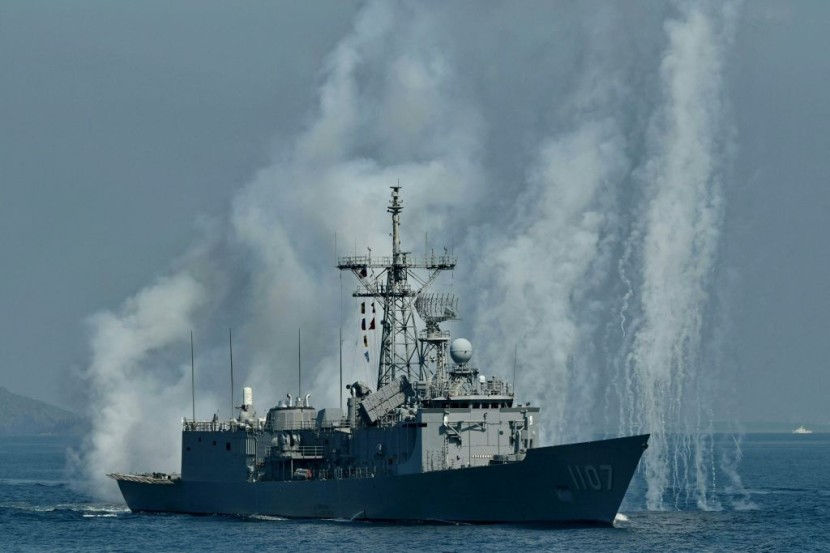
The United States government has deployed two Navy warships to the Taiwan Strait, the first since House Speaker Nancy Pelosi visited the self-governing island nation, in an act that is expected to raise tensions with China.
On Sunday, the guided-missile cruisers USS Antietam and USS Chancellorsville were making the voyage "through waters where high seas freedoms of navigation and overflight apply in accordance with international law," said the U.S. 7th Fleet in Japan in a statement.
China-Taiwan Conflict
Authorities said that the transit was "ongoing" and that there had been "no interference from foreign military forces so far." The statement added that the ships were transiting through a corridor in the Taiwan Strait that is beyond the territorial sea of any coastal state.
They said that the ships' transit through the strait demonstrates the United States' commitment to a free and open Indo-Pacific. It added that the U.S. military flies, sails, and operates anywhere international law allows.
A spokesperson for the National Security Council, John Kirby, said on Sunday that the two Navy warships transiting the Taiwan Strait sent a "very clear" and "very consistent" message. The official said that the activity was planned a long time ago, as per CNN.
On the other hand, the Chinese military's Eastern Theater Command said that it was monitoring the two American warships, maintaining a high alert, and was "ready to thwart any provocation." Beijing claims sovereignty over Taiwan despite China's ruling Communist Party never having controlled the island.
Beijing officials consider the strait, which is a 110-mile stretch of water that separates the democratic self-governing island nation from mainland China, as part of its "internal waters." However, the U.S. Navy says most of the strait is in international waters.
According to Reuters, the situation comes after Pelosi's trip to Taiwan in early August infuriated China which saw it as a U.S. attempt to interfere with its internal affairs with Taipei. Subsequently, Beijing launched military drills near the self-governing island nation which have since continued.
Taiwan Strait
Furthermore, Taiwan's defense ministry said that the warships were sailing in a southerly direction and that its forces were observing but that "the situation was as normal." The Taiwan Strait has been a frequent source of military tension since the defeated Republic of China government fled to Taiwan in 1949 after losing a civil war with the communists, who established the People's Republic of China.
The U.S. House Speaker's visit to Taiwan was also followed by a group of five other U.S. lawmakers who traveled to the island around a week later, prompting China's military to respond by carrying out more exercises near the island.
China's military has criticized the United States for having "hyped" the operation "publicly," with Shi Yi, a senior colonel, and spokesperson for the PLA Eastern Theater Command, saying that they were now conducting "security tracking and monitoring of the U.S. warships' passage in the whole course.
In the past, the U.S. and other nations have periodically sailed through the Taiwan Strait, drawing stern replies from China, though such passages did not take place as China conducted military exercises in the waterway after Pelosi's visit, the Washington Post reported.
Related Article: Chinese Authorities Charge 28 People in Viral Video of Brutal Attack on Women That Sparked Outrage
© 2025 HNGN, All rights reserved. Do not reproduce without permission.








